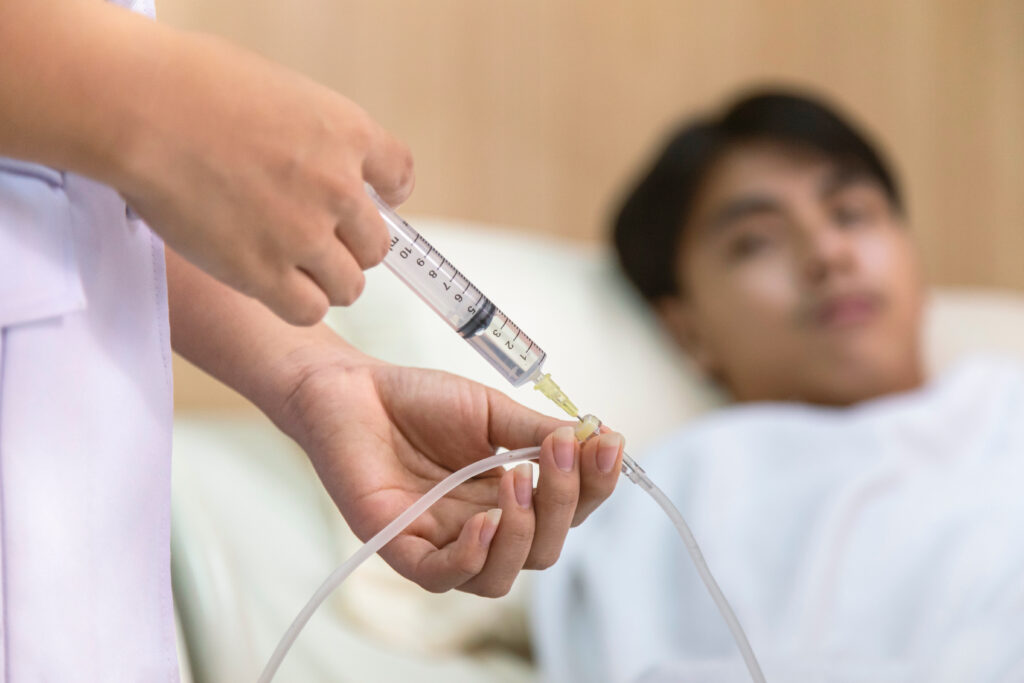by Morgan Haynes, CEO
By treaty, the U. S. federal government is obligated to provide critical healthcare services to Native Americans enrolled in one of the 574 federally recognized Tribes – roughly 2.6 million patients.
Indian Health Services (IHS) was created in 1955 to fulfill those obligations, but the organization is chronically underfunded. A federal report examined its 2022 budget and found that it funded less than half of what Native patients needed. A separate report from the Tribal Budget Formulation Workgroup estimated IHS would need a $51 billion budget to provide adequate health services and address health disparities in Tribal nations. Funding doesn’t just cover provider pay; it must stretch to cover everything from Electronic Health Records (EHR) upgrades to facility improvements to community programs targeting MMIW violence and the opioid crisis.
To put these numbers into context, per capita funding for IHS is quite a bit lower than that of other federally operated health providers. Medicare per capita spending is about 3x more than IHS, while VHA and federal correctional healthcare spending is double per capita.
But IHS funding is about more than dollar amounts; it’s also about the type of funding.
Quick history lesson: until December of 2022, IHS received funding through annual appropriations – that’s discretionary spending limited to that fiscal year. Any government shutdowns means IHS could run out of money. In the 2018-2019 government shutdown, which lasted 35 days, IHS furloughed approximately 25% of its staff. Five people died during the shutdown and seven suffered drug overdoses.
One solution: advance appropriations, which can help IHS keep facility doors open and continue services. Mandatory funding would be even better, liberating IHS from waiting for annual funding decisions from the federal government; instead, funding would be expected, just like Social Security.
Without that kind of funding, IHS can’t always offer a full suite of services all year. Sometimes they can make referrals to outside medical service providers, as we recently noted in our Purchased/Referred Care article but they can run out of those funds too.
This shortfall leads to significantly worse health outcomes for Native people compared to other racial groups: shorter life expectancy, diabetes, heart disease, and other conditions.

IHS funding is also a political matter, influenced by Presidents and the Supreme Court.
Because IHS funding is controlled by federal purse strings, presidential administrations can be highly influential. For instance, President Trump’s previous administration proposed cutting funding for the Indian Health Service and tried to exclude Native tribes from the CARES Act. He also failed to renew President Obama’s White House Council on Native American Affairs for the first three years of his term, though Tribal representatives requested it.
The Biden administration commissioned the aforementioned July 2022 report from the Department of Health and Human Services that evaluated IHS funding shortfalls; after that, Indian Health Service received just over $5 billion in advance appropriations. President Biden then signed the Consolidated Appropriations Act (H.R. 4366), into law in March 2024, including $6.96 billion for IHS (almost double 2023 funding.) The act also included $90.42 million for urban Native health for 2024 and advance appropriations for IHS totaling $5.19 billion for 2025. Vice President Harris pledged her commitment to Native health on her visits to Tribal nations.
IHS Director Roselyn Tso praised President Biden’s Fiscal Year 2025 Budget, saying, “These major steps demonstrate the Biden Administration’s continued commitment to honoring the United States’ trust responsibility to tribal nations, strengthening the nation-to-nation relationship, and improving the health of American Indians and Alaska Natives throughout Indian Country.”
The Supreme Court also weighs in on Native American and Tribal health decisions. Recently the Court ruled 5-4 that U.S. must pay more for Native American tribes’ overhead and administrative care costs. This pertained to IHS funding as well, as the decision concerned whether IHS must reimburse tribes for the costs involving the management of Medicare, Medicaid, and private insurer healthcare programs.
When it comes to public opinion, you probably won’t be surprised to hear there’s a sharp divide on healthcare funding policy between Republicans and Democrats. This pertains to overall healthcare funding, not just Native healthcare, but 81% of Democrats believe the federal government is responsible for funding healthcare; 77% of Republicans believe it isn’t.
All of which is to say that our votes directly influence healthcare in Tribal nations.

The 2024 election will impact Native care – we just don’t know how yet.
On November 5, the United States will elect its next President. While many issues will surround each person’s ballot decision, funding for IHS and other Native health resources will be a top priority for those of us committed to quality healthcare for Native communities. We don’t have a crystal ball to say who will be elected or what changes they’ll make or the funding they’ll approve for Native communities. But we are in a unique position where both frontrunners have already served as President or Vice President, giving us some idea of what to expect.
One thing we can definitely say: when Native healthcare isn’t adequately funded, Native lives aren’t fully valued. We hope the next presidential administration will carry funding in the right direction and correct the wrongs that have limited access to care for so many Tribal nations. We hope you support that too.

